Meet the Woman Behind Newsom Country Ham
Six months before Christmas, when her country hams are about to undergo what she calls the “July sweats,” Nancy Newsom stands in the back room of her shop, holding an ice pick. She slides it into the meat of an aged ham, close to the bone, and then lifts the pick to her nose. To the layperson, it might smell mostly of metal, but Newsom can distinguish traces of sumptuous funk created by weather, smoke, and time.
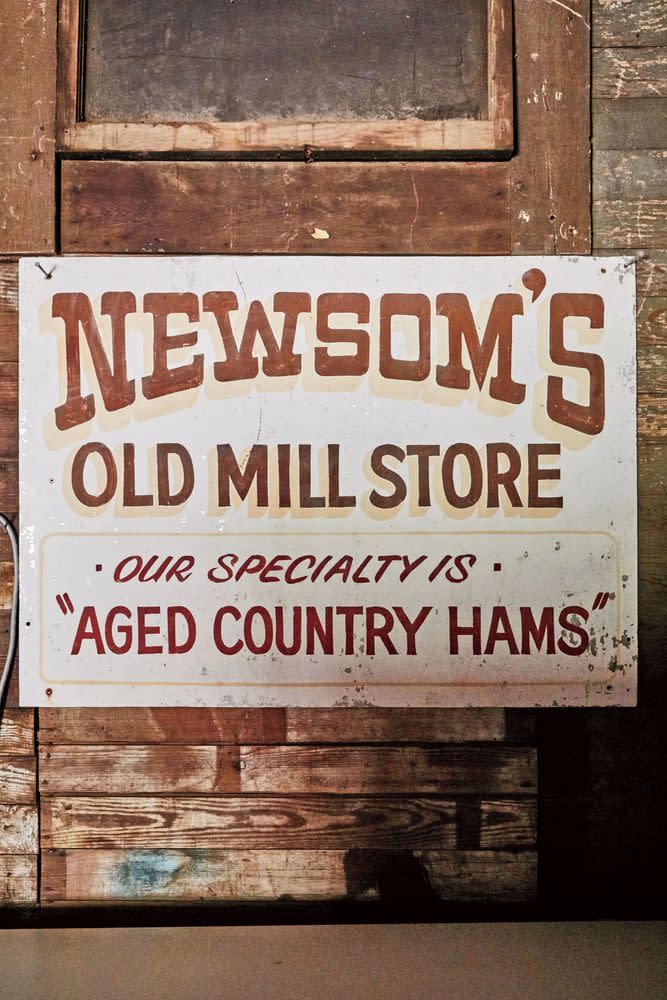
With a crumbly-looking brick wall behind her and wrinkled, ruby-colored hams on a rough-hewn table in front of her, the scene could’ve been plucked from a small town in Spain or Italy. But this is Princeton, Kentucky, population 6,108. The Newsom family has operated its grocery, seed, and ham businesses along this section of the town’s Main Street since 1917. Many years earlier, one of Newsom’s ancestors moved the family to Kentucky on a Revolutionary War land grant from Virginia by way of North Carolina.
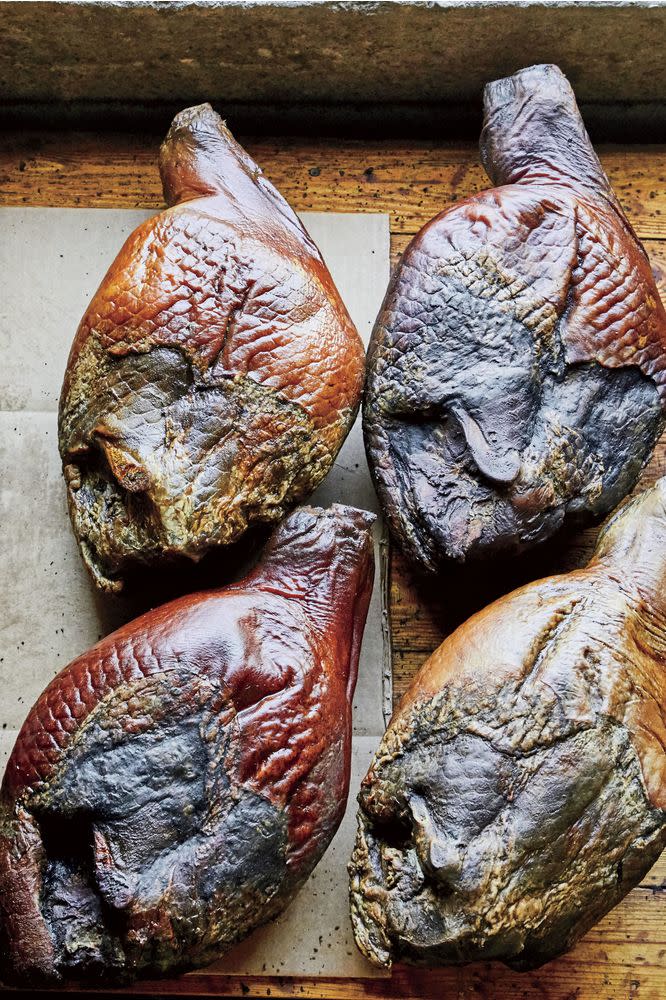
Just as her father and grandfather cured hams before her, Newsom—known as the Ham Lady—will tinker with her hams many times during the curing process. After she receives fresh hams (some from heritage breeds) from farms in Kentucky and Missouri, she massages them with salt and brown sugar and then hangs them up to be smoked. As they age and lose moisture, they deepen in color; draw up in size; grow the fuzz of mold in some places; and take on a salty, deeply pungent flavor brought on by the whims of weather and the changing seasons. After nearly a year in a cloudy haze and darkness, many of them make their grand debuts during the holidays. But even in the midst of a hot summer, Newsom is already thinking ahead. “People don’t realize that their palates change with the seasons,” she says. “They might think that the busiest time for ham would be at Easter, but they want cured meat more in cooler temperatures.”
While a woman in the commercial-ham business might seem unusual, she chose this path despite her father’s suggestion (when she was 18) to consider secretarial school instead. She’s stuck with it through raising children, divorce, and fire—and shrugs off the challenges, saying the work comes naturally to her. While the men have traditionally handled the hog killing in the cooler weather, the women have cured.
Newsom’s first memories of country ham come with an aroma—the lingering scent of a wood-fired fog that seeped into her father’s clothes. Although her parents are no longer around, that same smokehouse is in operation today, and the home in front of it, though often unoccupied, looks much as her parents left it. She can still point out the patterned blue china her mother would put on the table at Christmas. And while the dishes were filled with a plethora of sides—corn pudding, cranberry sauce, cheese grits, orange-whipped congealed salad—the ham fanned out on a silver platter was the centerpiece. “When I taste a ham at Christmastime, I always want it to be like what I had as a child,” she says. “I don’t know if we have improved anything over what my father did, but I know that we do it the same way.”
Although the family has been curing hams and working in the general store and grocery business for more than a century, the ham portion really took off when one particular food lover took an interest in their product and wrote about it for a 1975 issue of American Airlines’ in-flight magazine. The writer’s name: James Beard.
“A customer from Princeton who lived in Virginia got ahold of one of his books,” Newsom says. “She wrote him a long letter and told him he hadn’t had a good ham until he’d had one of Col. Bill Newsom’s hams.” Beard and Newsom’s father struck up a friendship, and the famed chef, author, and television personality would phone him at home to talk shop. “He would call Dad when he was in his easy chair in the evening. James Beard would ask what stage the hams were in—he used our hams to teach with,” she recalls.
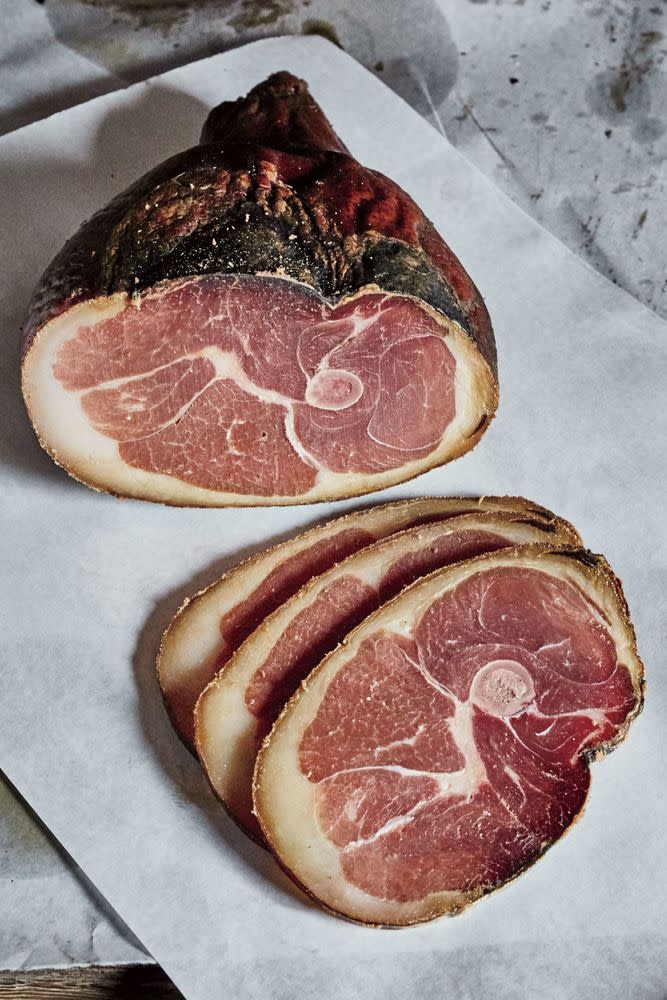
Newsom’s launched a mail-order service in 1975 following Beard’s article. Each ham came with a letter written by Newsom and signed by her father. The newsletter, which she still writes today, was one of her first forays back into the family business. (She had moved away to Illinois for a few years and then returned home when her first child was born.) The mail-order service would continue to grow over the years, shipping to homes and restaurants from coast to coast. Word continued to spread, earning them a permanent place in the Ham Museum of Aracena, Spain, as well as a slew of accolades. Even Julia Child, a friend of Beard’s, became a fan over the years; Newsom keeps a framed letter from her on the wall of the shop.
“We finally finished our television series, and your ham graced our buffet table for the last show,” Child wrote. “It is wonderful to know that there are people like you who still keep up the great standards and are not trying to speed things up and lose that great taste that those hams can have.” Indeed, as the business grew and changed, the way they cured the hams did not. The original formula, which is handed down through a family will, came along with decades of experience learned firsthand. As Newsom says, there’s much more to curing hams than following a recipe.
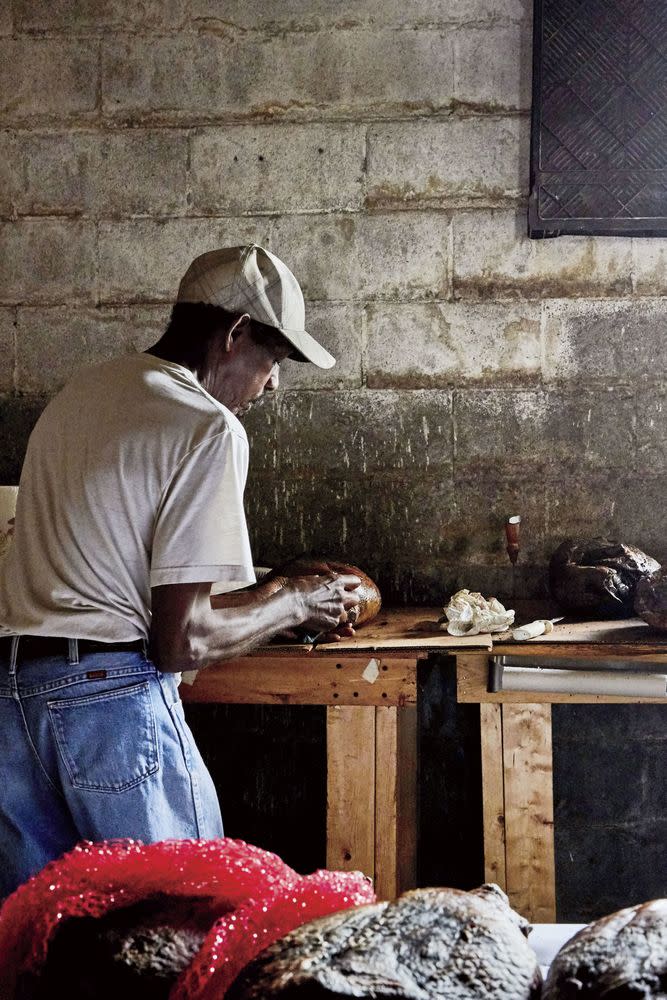
A bell jangles over the door at Newsom’s every few minutes as customers enter and weave their way through baskets of sorghum drop candy, shelves of pickles and jams, and pails of dried bean seeds to reach the sandwich counter. Newsom greets them all, but before asking what type of ham sandwich they would like, she will inquire about their moms and dads and granddads and cousins. She knows whose family members have passed away and who’s sick. “I don’t see just them coming in,” she says. “I see the generations of people who buy from Newsom’s as a tradition.”
When Laurie Conner, a Princeton native, walks through the door of the store, Newsom knows her as Sarah and Bill Adams’ daughter. “Oh, I’m sorry about your mama,” she says. “How’s your daddy been?”
Conner began coming to Newsom’s with her grandmother. Now, Conner’s children look forward to stopping by when they visit from Louisville. “We always have country ham at Christmas,” she says. “Of course, my husband’s family has always shopped here too.”
Mercantilism runs in Newsom’s blood, and she believes that there are “certain tendencies of knowing how to do things” that seep like smoke into a person’s lineage and extend beyond memorized technique.
Newsom’s father began working at age 8 and took over the shop at 18 (his father died at 49). She began helping out in the shop at 16. Later, she pitched in with the men who handled the hams, committing it to memory, in case she needed it someday. “I carried my own weight on that one,” she says. “Those hams, if you’re handling several of them a day, you’re doing some hard work. I wasn’t going to be a bother.”
But the transition from working in the shop as a teen to taking over the business wasn’t a smooth or straight one. It took a disaster, and a bit of mystical direction, to put Newsom in the same rusty chair from the smokehouse as her father.
A fire swept through the store in 1987, leaving it gutted. The only relics untouched were tools and trappings of the business—the “ham files” (mail-order list), a band saw, a 200-year-old chopping block, and a pig portrait (a gift to Newsom’s father from the Rotary club).
Although the grocery side of the operation never came back—and her father would never return to work full-time—the day after the fire, Newsom knew it was time to put the knowledge she’d gathered to work. “I decided I was doing it,” she says. “We were off one day after the fire, and the next day, we came back to work.”
While she has two smokehouses now, the original one behind the home where she grew up has taken on a sort of spiritual quality, earning nicknames like “ham church.” Newsom says she’s felt the presence of her father in this place, and she keeps a cross on the front door. Inside, the concrete block walls are black with smoke. Rows of hams in mesh bags hang like shiny orbs, reaching to the top of a soaring smoke-stained ceiling. And even when the smoke isn’t rolling, a deep aroma persists, along with an eerie quiet.
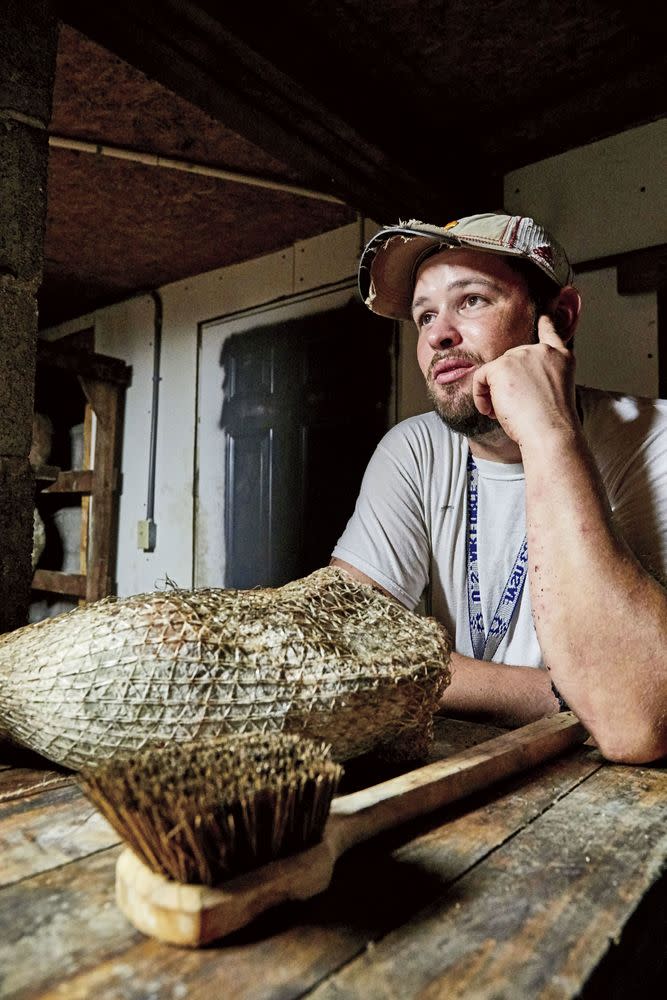
These days, Newsom’s son, John, has been learning the family craft. Although the two have different ways of stacking their kindling and different ideas about how high to keep the flame, they share a love for the process and the outcome. “Look at those aging flecks, Son,” she says, pointing to white bits of crystallization in thin slices of sharp-tasting prosciutto. He nods and later adds, “I’m obsessed with it.”
Sometimes, though, John gets frustrated at his mom’s suggestions—or lack thereof. “She doesn’t give me the answer,” he’ll say. And that’s because there is no perfect answer, Newsom retorts. “When you’re the mother and female and boss…” she starts but trails off. “I’m just backing off and letting him figure it out.”
Newsom’s father did much the same for her back in her day, though sometimes the elder generation must step in, like when John wanted to follow some instruction his grandfather had been quoted as saying in books. “Your grandpa never gave proper proportions to anybody,” she told him.
Just when Newsom thinks her son is idolizing her father and overlooking her influence on the place, he does something that catches her by surprise. John recently painted over a “Col. Bill Newsom” sign that was hanging outside the original smokehouse. He decided it should now read “Col. Nancy Newsom Aged Kentucky Hams.”
All of Newsom’s hams are available by mail order at newsomscountryham.com.

